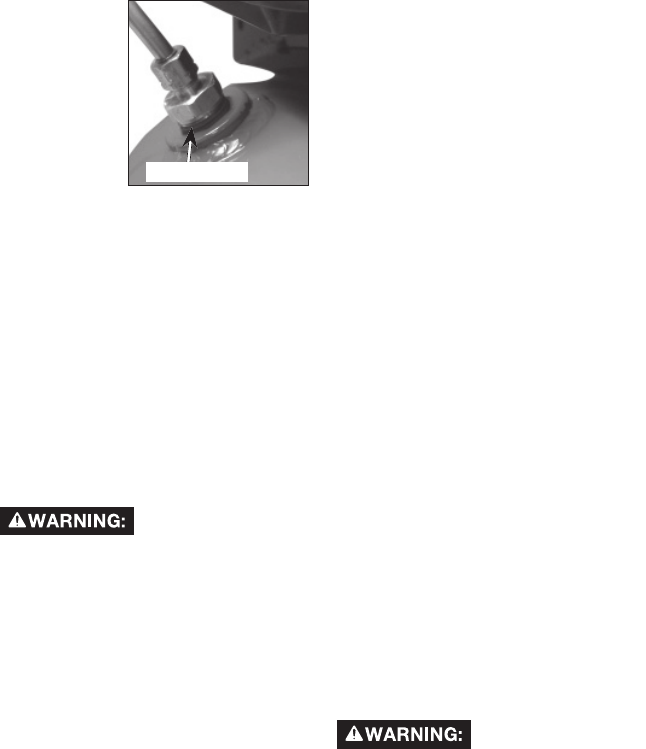
13 - ENG
A13640
Air Compressor Pump (not shown):
Compresses air into the air tank.
Working air is not available until the
compressor has raised the air tank
pressure above that required at the
air outlet.
Check Valve:
When the air
compressor is
operating, the
check valve
is "open",
allowing
compressed
air to enter
the air tank.
When the
air compressor reaches "cut-out"
pressure, the check valve "closes",
allowing air pressure to remain inside
the air tank.
How to Use Your Unit
How to Stop:
1. Set the On/Auto/Off lever to
"Off".
Check Valve
Before Starting
Break-in instructions
Risk of Unsafe
Operation. Serious
damage may result if the following
break-in instructions are not
closely followed.
This procedure is required before the
air compressor is put into service and
when the check valve or a complete
compressor pump has been replaced.
1. Make sure the On/Auto/Off lever
is in the "Off" position.
NOTE: If quick connect is installed,
pull coupler back until it clicks to
prevent air from escaping through the
quick connect.
2.
Plug the power cord into the
correct branch circuit receptacle.
(Refer to "Voltage and Circuit
Protection" paragraph in the
Installation section of this
manual.)
3. Open the drain valve fully
(counter-clockwise) to permit
air to escape and prevent air
pressure build up in the air tank
during the break-in period.
4. Move the On/Auto/Off lever
to "On/Auto" position. The
compressor will start.
5. Run the compressor for 15
minutes. Make sure the drain
valve is open and there is
minimal air pressure build-up in
tank.
6. After 15 minutes, close the drain
valve (clockwise). The air receiver
will fill to "cut-out" pressure and
the motor will stop.
The compressor is now ready for use.
Before Each Start-Up:
1. Place On/Auto/Off lever to "Off".
2. Pull regulator knob out, turn
counter-clockwise until it stops.
Push knob in to lock in place.
3. Attach hose and accessories.
NOTE: The hose or accessory
will require a quick connect plug
if the air outlet is equipped with a
quick connect.
Risk of Bursting.
Too much air
pressure causes a hazardous risk of
bursting. Check the manufacturer’s
maximum pressure rating for air
tools and accessories. The regulator
outlet pressure must never exceed
the maximum pressure rating.


















